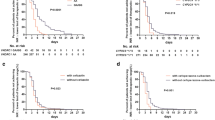Abstract
Background: Multiple factors can affect the anticoagulation effect of warfarin. The objective of this study was to determine the relationship between different clinical factors and outcomes of warfarin therapy in Hong Kong Chinese patients.
Methods: The study was conducted at the anticoagulation clinic of the Prince of Wales Hospital from 1 April to 31 December 2003. Clinical data collected included demographics, indications of warfarin, dietary vitamin K consumption, and drug-drug interactions. Blood samples were obtained for the genetic polymorphism analysis of CYP 2C9. Linear and multiple regression analysis were used for statistical analysis to determine the correlation between variables and the importance of various factors as the determinants of warfarin dosage requirement.
Results: A total of 63 patients were recruited. The mean warfarin dosage was 3.30 ± 2.23 mg/day. The warfarin dosage ranged from 0.75 to 12 mg/day. The mean age was 59 ± 14 years old. Age, dietary vitamin K consumption, chronic heart failure, atrial fibrillation, hypertension, smoking and drinking status were found to be factors statistically significant affecting warfarin dosage. We detected no single nucleotide polymorphism in CYP 2C9 exon 4.
Conclusion: Age, dietary vitamin K consumption, warfarin indication for atrial fibrillation, co-morbid with CHF, smoking and drinking status were found to be the factors that affected the warfarin requirement in Hong Kong Chinese patients. However, the genetic polymorphism in exon 4 of CYP 2C9 may not be associated with the warfarin sensitivity in this patient population.
Similar content being viewed by others
References
Takahashi H, Echizen H. Pharmacogenetics of warfarin elimination and its clinical implications. Clinical Pharmacokinetics 2001;40(8):587–603.
Loebstein R, Yonath H, Peleg D, et al. Interindividual variability in sensitivity to warfarin–-Nature or nurture? Clinical Pharmacology and Therapeutics 2001;70:159–164.
Goldstein JA. Clinical relevance of genetic polymorphisms in the human CYP2C subfamily. British Journal of Clinical Pharmacology 2001;52(4):349–355.
Lee CR, Goldstein JA, Pieper JA. Cytochrome P450 2C9 polymorphisms: A comprehensive review of the in-vitro and human data. Pharmacogenetics 2002;12:251–263.
Higashi MK, Veenstra DL, Kondo LM, et al. Association between CYP2C9 genetic variants and anticoagulation-related outcomes during warfarin therapy. JAMA 2002;287:1690–1698.
Leung AYH, Chow HCH, Kwong YL, et al. Genetic polymorphism in exon 4 of cytochrome P450 CYP2C9 may be associated with warfarin sensitivity in Chinese patients. Blood 2001;98:2584–2587.
Couris RR, Tataronis GR, Booth SL, et al. Development of a self-assessment instrument to determine daily intake and variability of dietary vitamin K. Journal of the American College of Nutrition 2000;19(6):801–807.
Chang JG. No exon 3 polymorphism of cytochrome P450 CYP2C9 in Taiwanese. Blood 2003;101:5086–5087.
Yu HCM, Chan TYK, Critchley JAJ, et al. Factors determining the maintenance dose of warfarin in Chinese patients. QJM 1996;89(2):127–135.
Absher RK, Moore ME, Parker MH, et al. Patient-specific factors predictive of warfarin dosage requirements. Annals of Pharmacotherapy 2002;36(10):1512–1517.
Blann A, Hewitt J, Siddiqui F, et al. Racial background is a determinant of average warfarin dose required to maintain the INR between 2.0 and 3.0. British Journal of Haematology 1999;107(1):207–209.
Roberts GW, Helboe T, Nielsen CBM, et al. Assessment of an age-adjusted warfarin initiation protocol. Annals of Pharmacotherapy 2003;37(6):799–803.
Khan T, Kamali F, Daly A, et al. Warfarin sensitivity: Be aware of genetic influence. Age {&} Ageing 2003;32(2):226–227.
Kamali F, Khan TI, King BP, et al. Contribution of age, body size, and CYP2C9 genotype to anticoagulant response to warfarin. Clinical Pharmacology {&} Therapeutics 2004;75(3):204–212.
Roberts GW, Gallus AS, Druskeit T, et al. Comparison of an age adjusted warfarin loading protocol with empirical dosing and Fennerty’s protocol. Australian and New Zealand Journal of Medicine 1999;29(5):731–736.
Kamali F, Edwards C, Butler TJ, et al. The influence of (R)–-and (S)-Warfarin, vitamin K and vitamin K epoxide upon warfarin anticoagulation. Thrombosis {&} Haemostasis 2000;84(1):39–42.
Ammash N, Warnes CA. Cerebrovascular events in adult patients with cyanotic congenital heart disease. Journal of the American College of Cardiology 1996;28(3):768–772.
Ha CE, Petersen CE, Park DS, et al. Investigations of the effects of ethanol on warfarin binding to human serum albumin. Journal of Biomedical Science 2000;7(2):114–121.
James AH, Britt RP, Raskino CL, et al. Factors affecting the maintenance dose of warfarin. Journal of Clinical Pathology 1993;46(4):382–383.
Hylek EM, Regan S, Go AS, et al. Clinical predictors of prolonged delay in return of the international normalized ratio to within the therapeutic range after excessive anticoagulation with warfarin. Annals of Internal Medicine 2001;135(6):393–400.
Wong RSM, Cheng G, Chan TYK. Use of herbal medicines by patients receiving warfarin. Drug Safety 2003;26(8):585–588.
{Couris RR, Tataronis GR, Booth SL, et al. Development of a self-assessment instrument to determine daily intake and variability of dietary vitamin K. Journal of the American College of Nutrition 2000;19(6):801–807.
Miller LG. Herbal medicinals: Selected clinical considerations focusing on known or potential drug-herb interactions. Archives of Internal Medicine 1998;158(20):2200–2211.
Khan T, Wynne H, Wood P, et al. Dietary vitamin K influences intra-individual variability in anticoagulant response to warfarin. British Journal of Haematology 2004;124(3):348–354.
Author information
Authors and Affiliations
Corresponding author
Rights and permissions
About this article
Cite this article
Lee, V.W.Y., You, J.H.S., Lee, K.K.C. et al. Factors Affecting the Maintenance Stable Warfarin Dosage in Hong Kong Chinese Patients. J Thromb Thrombolysis 20, 33–38 (2005). https://doi.org/10.1007/s11239-005-3121-8
Issue Date:
DOI: https://doi.org/10.1007/s11239-005-3121-8




